According to the WHO's (World Health Organization) Global Oral Health Status Report (2022), “Oral problems affect about 3.5 billion people globally.” People suffer from different dental issues, ranging from tooth cavities to severe gum diseases.
Most of them are curable in their early stages. In contrast, some leave the dentist with no option except tooth extraction. Its most common reasons are tooth caries, fractured roots or teeth, and complicated periodontal and endodontic diseases.
Exodontia is the tooth extraction from its socket in the alveolar bone under general anesthesia. The procedure is quite challenging, and dentists need multiple dentistry instruments to perform it.
The common tools for this dental treatment are forceps, elevators, explorers, mirrors, and curettes. All these tools vary in their features and shapes. Accordingly, they perform different functions during tooth removal procedures.
This blog will give you detailed information about the role of different types of dental elevators during exodontia. So, first of all, let’s look at why a tooth elevator is essential for removing teeth.
Why Do Dentists Use Dental Elevators?
Teeth elevators are essential in removing the tooth from the socket without damaging the surrounding tissues. In addition, no tooth extraction procedure is possible without them. Therefore, they are an essential component of the dental extraction toolkit.
The dental instrument consists of a handle, a shank, and a working end. It comes in different sizes, and its selection depends on the root or tooth size. Shanks are either long or short, and blades have different designs.
After selecting the perfect-sized dental elevators, a dentist inserts it into the gingival margin. Then, move it slowly down to the periodontal surface. Next, the space is created around the circumference of the tooth with the help of rotational motion. So, making it easy to pull out the tooth using forceps.
Now, let’s discuss the different types that assist dentists in removing teeth.
The Different Types of a Tooth Elevator and Their Functions
They are available in various styles, giving surgeons more choices to select the right tool for ongoing dental procedures. The different elevators perform different functions to assist surgeons in removing a tooth efficiently. The following are the main types and their functions during dental exodontia.
1. Apexo Elevator
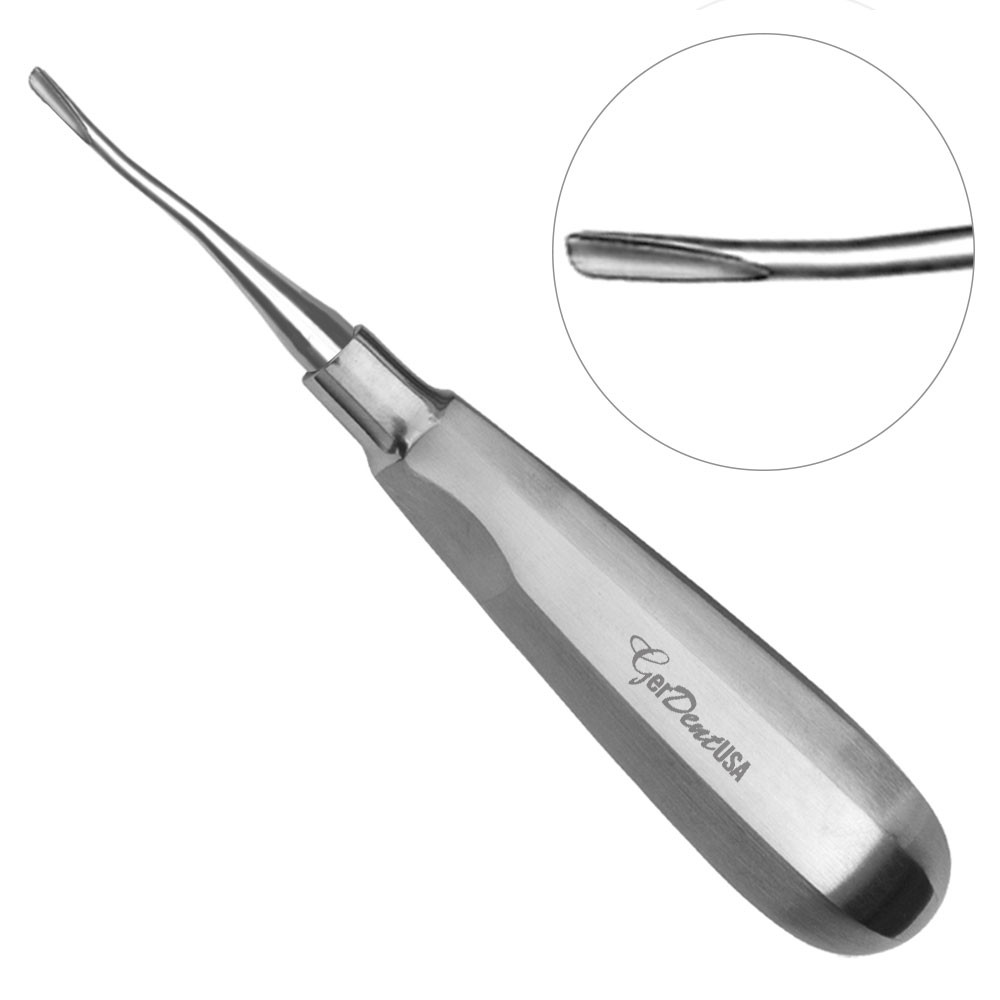
Apexo elevator is specially designed to remove the fractured or broken root tips below the gum line. They are perfect for losing or removing oral fragments without causing any injury to the nearby tissues or roots. Also, they are suitable for upper anterior roots and small teeth.
On top of everything, the dental tool is ergonomically designed; hence, it doesn’t cause strain on the surgeons’ hands. Moreover, its thin working ends can easily reach confined spaces, making luxation of the root or tooth easy. In this way, it makes the exodontia procedure effortless for dentists.
2. Apical Elevator
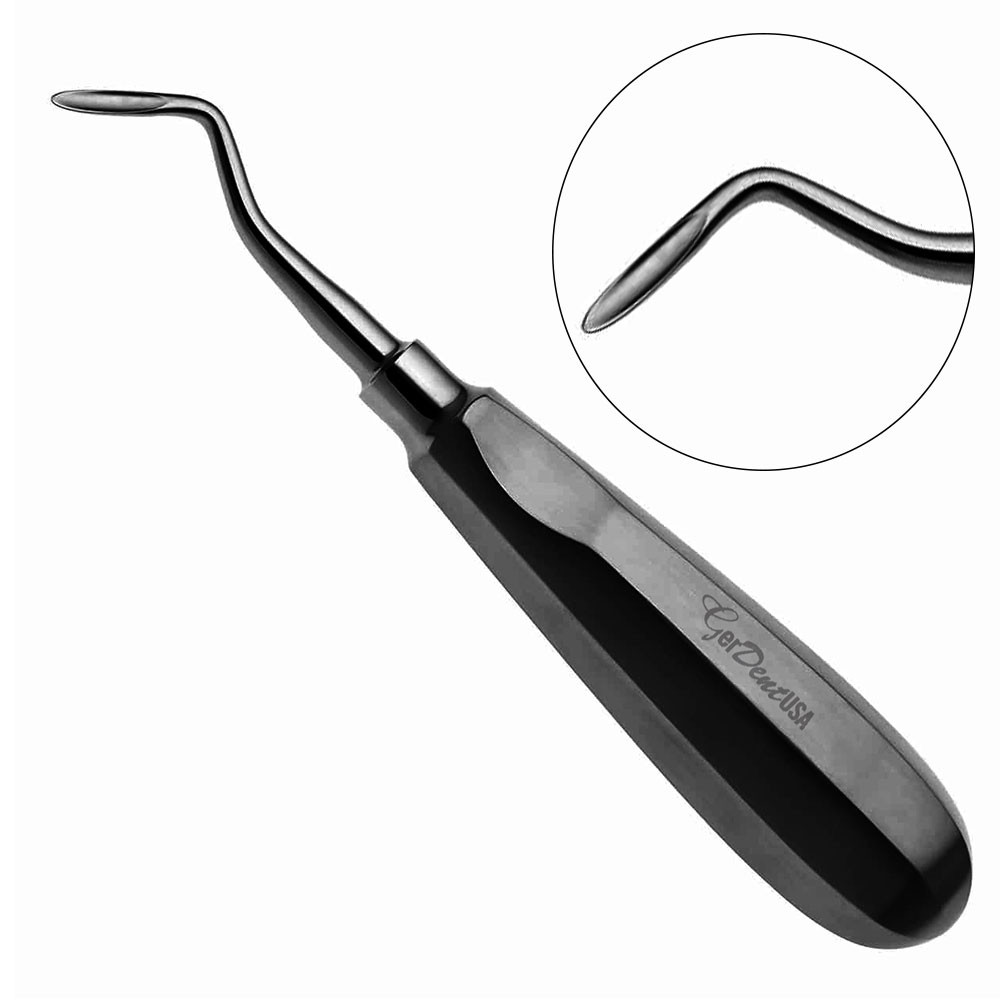
The apical elevator is a dental elevator that loosens the tooth from the periodontal socket and separates the periodontal ligament from the tooth. Consequently, it expands the tooth socket to extract the damaged tooth easily. That is why it is ideal for removing deep-seated or broken roots.
Its unique structure keeps the nearby tissues intact while removing the broken tooth fragments. Dentists push this dental tool between the alveolar bone and the tooth and gently rotate the thumb handle in a quarter-turn movement. Thus, it loosens the tooth from the tooth socket, which is easy to extract afterward.
3. Barry Elevator
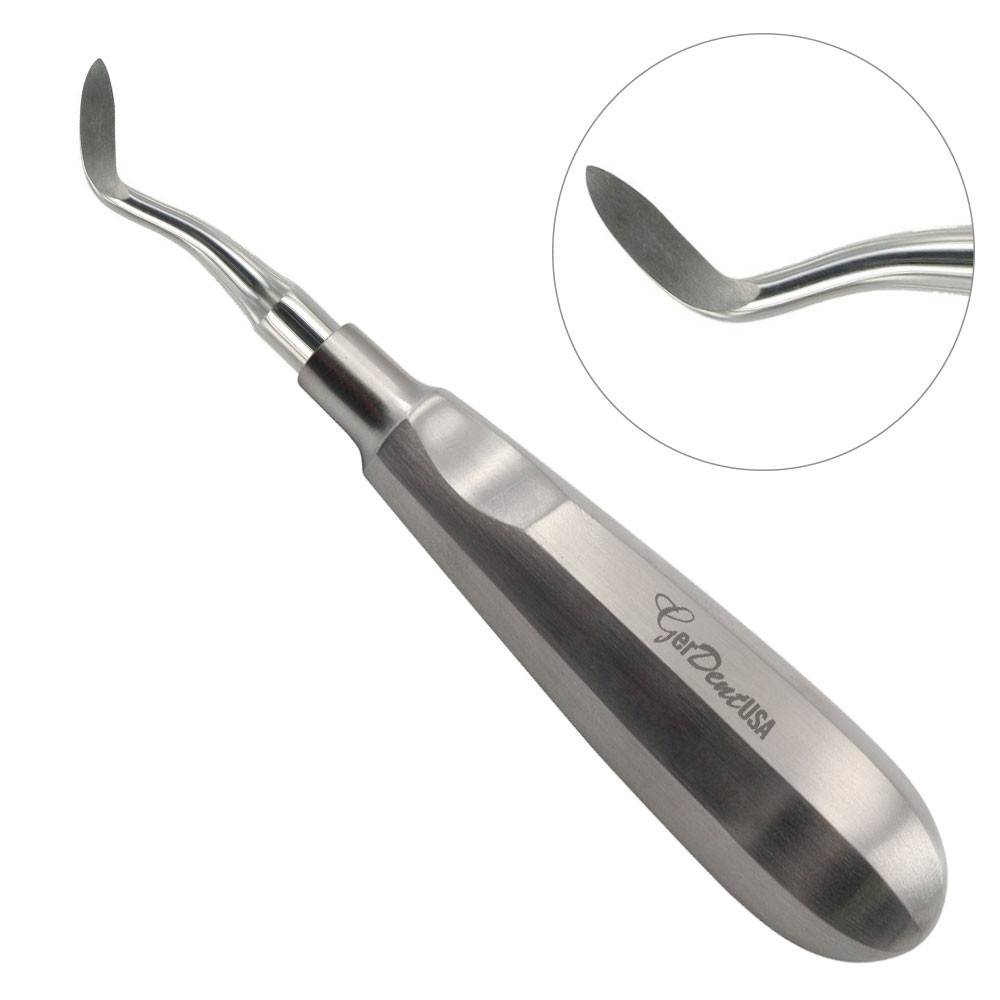
It is a specially designed tooth elevator for dental extraction procedures. Dentists use it to elevate the periosteum from the alveolar bones during tooth removal. Furthermore, its unique T-shaped working end effectively removes fractured roots.
The dental instrument features an angled tip and ergonomic handle. Further, it is available in different sizes; thus, surgeons can perform the dental procedure with the perfect-sized tool. Besides, it is made of German stainless steel, making it sturdy and enduring.
4. Crane Pick Elevator
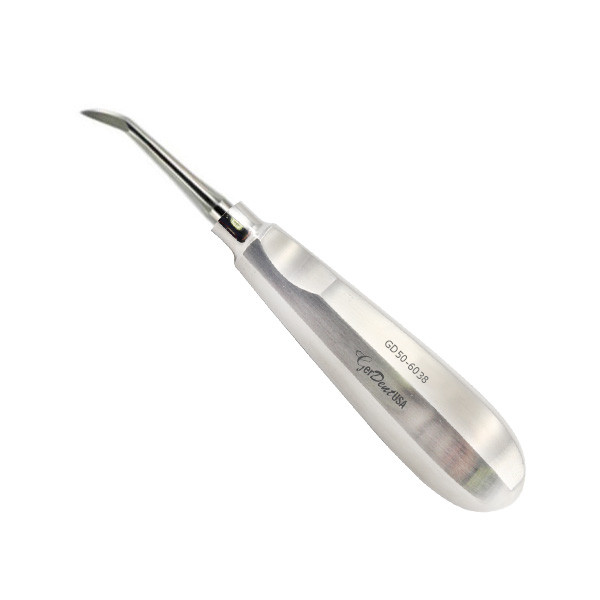
Dentists use Crane Pick Elevator to elevate the broken roots from the tooth socket. Its sharp, 45-degree angled tip quickly penetrates through the root and gently loosens the tooth from the gums. Over and above that, it doesn’t cause any accidental injury to the surrounding tissues of the damaged tooth.
Its thumb handle is easy to use; hence, it adds comfort for the dentist to efficiently treat the dental issue. Its sharp working ends also play a significant role in separating connective tissues and periodontal fibers from the base of the damaged roots. Furthermore, the dental tool assists dentists in picking up root fragments left behind after removing a tooth.
5. Luxating Elevator
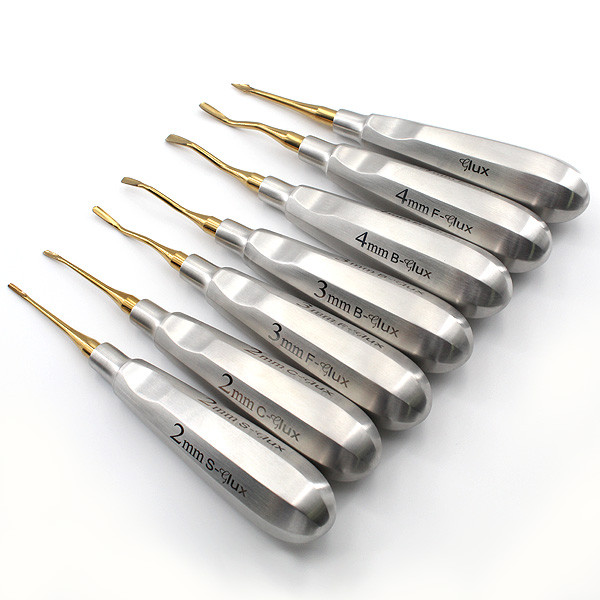
Luxating elevators loosen and elevate the tooth from the periodontal ligament. It also features a sturdy handle, shank, and sharp working end. The thick handle provides an efficient grip for smoothly cutting the ligaments connecting the tooth to the gums.
In addition, its sharp tip helps the dentist perform the tooth extraction procedure precisely. The dental tool is available in different patterns, each with unique features. Its blades are also available in both curved and straight designs. It is made of German stainless steel; therefore, it is resistant to rust and corrosion.
6. Periosteal Elevator
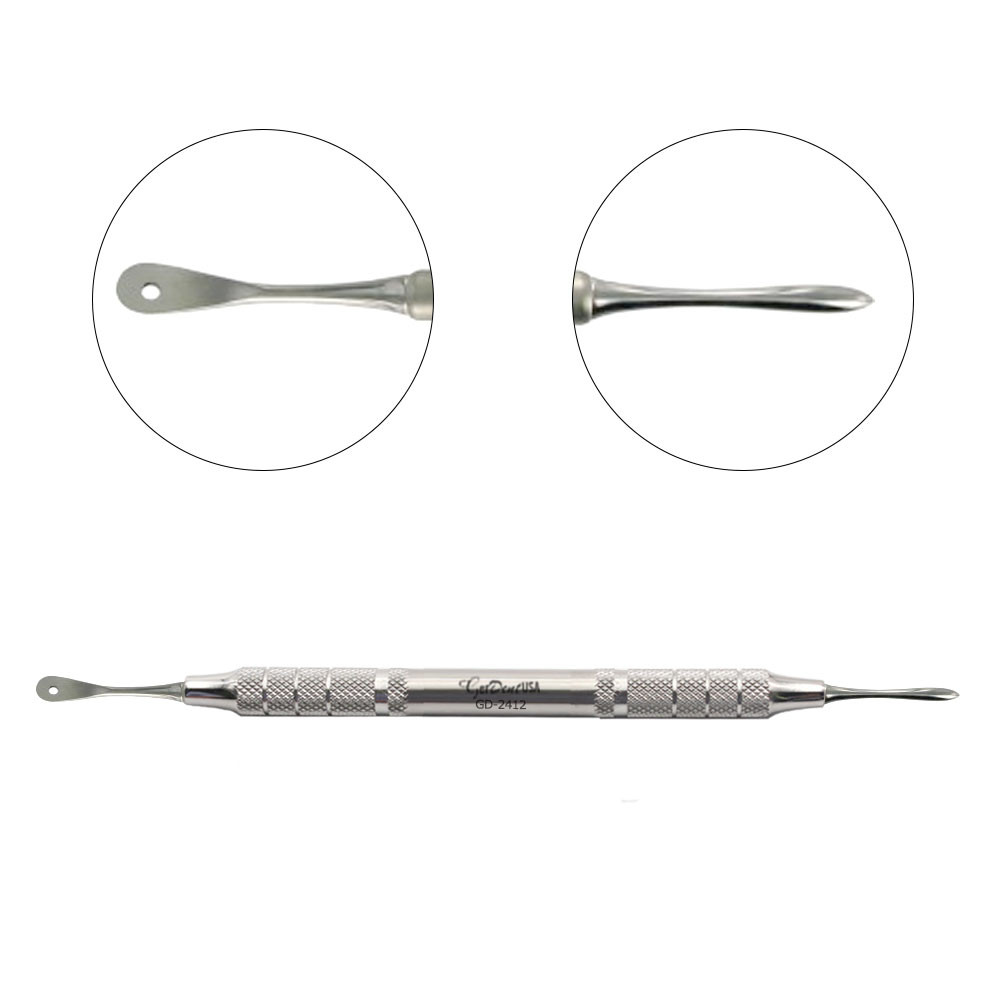
It is the tooth extraction instrument that separates the periosteum from the bone. It lifts the full thickness of the soft tissue flaps during exodontia. For this purpose, it features a double-ended, slightly curved, and thin tip to perform the procedure atraumatically.
Further, the periosteal elevator has an ergonomic shape that raises the tissues around the tooth in a cervical manner. As a result, it provides maximum exposure to the surgical site. The dental elevator is available in both single- and double-ended structures.
It has a long, slender shape to elevate the delicate tissues before removing the tooth. The availability of its multiple variations makes it a perfect fit for the dental extraction kit. Moreover, it is resistant to rust and corrosion due to German stainless steel.
Are You Looking for Premium-Quality Tooth Elevators?
The quality of dental tools matters the most, as they come into direct contact with the mouth. Also, the quality tools don’t harm the nearby tissues because of their ergonomic designs. For such reasons, dentists only want high-quality tools to provide maximum safety to their patients.
If you are also a dentist and want precisely crafted dental tools for your clinic, GerDentUSA could be your premium choice. We have been manufacturing and supplying dentistry instruments for the last three decades.
Aside from that, we customize dental tools to your specifications. We have an extensive collection of dental instruments, along with multiple variations of a tooth elevator. Most of our innovative dentistry tools are German-forged. They are resistant to rust and corrosion. Furthermore, they have surfaces that are inert to many chemical reactions.
All our tools are sturdy and resilient. Our instruments are also available in multiple variations to offer a wide variety. So, make your dental practice more efficient with our reliable dental tools.
FAQ’s
How Are Our Dental Elevators Different From Our Luxating Elevators?
Our tooth elevators and luxating elevators are different in their designs and uses. Our elevators are thicker than luxating elevators. Elevators are also less sharp than luxating elevators. Elevators pull the tooth out of its socket, while the luxating elevators efficiently cut the periodontal ligament.
Do We Have a Variety of Dental Elevators?
Yes, we offer a wide range of tooth elevators. Furthermore, we provide multiple variations of each type of dental elevator, each with a different size and feature. Therefore, they accommodate dentists so they can perform the dental extraction procedure more efficiently.

